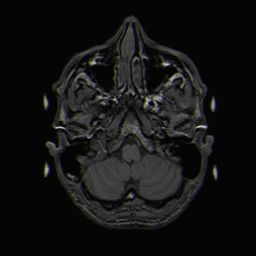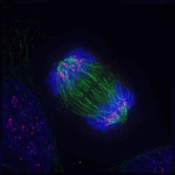Difference between revisions of "Embodied Simulation Theory2"
| Line 1: | Line 1: | ||
| − | == | + | ==Human Mirror System Organization== |
| + | |||
| + | In Humans the Mirror system gets activated is composed of the inferior parietal lobule (IPL) and the premotor cortex, and the caudal part of the inferior frontal gyrus (IFG) roughly corresponding to the pars opercularis of Broca’s area. These regions form the core of the human parieto-frontal mirror system. | ||
| + | |||
| + | Brain Imaging studies using transcranial magnetic stimulation (TMS), recorded the motor-evoked potentials (MEPs) and found the activation of motor cortex during action observation, which indicates the presence of Mirror system. Further the Mu rhythm, a rhythm recorded in the correspondence of the cortical motor areas and known to desynchronize during movement execution, also desynchronizes during the observation of actions carried out by others. Following the discovery of mirror neurons, several studies repeated these experiments confirming the desynchronization of Mu rhythm during action observation. | ||
*Action Encoding | *Action Encoding | ||
Revision as of 10:15, 16 July 2010
Contents
Human Mirror System Organization
In Humans the Mirror system gets activated is composed of the inferior parietal lobule (IPL) and the premotor cortex, and the caudal part of the inferior frontal gyrus (IFG) roughly corresponding to the pars opercularis of Broca’s area. These regions form the core of the human parieto-frontal mirror system.
Brain Imaging studies using transcranial magnetic stimulation (TMS), recorded the motor-evoked potentials (MEPs) and found the activation of motor cortex during action observation, which indicates the presence of Mirror system. Further the Mu rhythm, a rhythm recorded in the correspondence of the cortical motor areas and known to desynchronize during movement execution, also desynchronizes during the observation of actions carried out by others. Following the discovery of mirror neurons, several studies repeated these experiments confirming the desynchronization of Mu rhythm during action observation.
- Action Encoding
Social life is based on our capacity to understand the behavior of others. This includes understanding "what" is being done (action) and "why" its being done (intention). There is clear evidence from monkey experiments that neurons in the parietal lobe, premotor cortex, and even in the primary motor cortex, code the goal of a motor act rather than, as traditionally thought, movements of body parts.The 1st process is "Coding of the Goal of the action". The 2nd process is "Coding of the intention of the action".
Goal Coding
Mirror neurons located in F5 and in IPL have motor properties identical to those of purely motor neurons. Thus, because the electrical activity recorded in these experiments during voluntary behavior and action observation always consists of action potentials (the neuron output) the messages conveyed during voluntary movement and during mirror activation are identical. In both cases the neurons send information on the goal of the observed motor act.
Imaging studies provide evidence for this assertion. In one imaging study it was found that the parieto-frontal mirror system was activated both when volunteers are asked to observe video-clips showing a human arm grasping objects or a robot arm grasping objects despite differences in shape and kinematics between the human and robot arms. Another study looking at activation of brain areas when performing predictable and unpredictable movement showed that during unpredictable movements the mirror system was not activated while predictable movements activated it, as this was coded before the action took place (during observation).7
Coding the Intention
The results from an fMRI study with "context", "action", and "intention" settings show that that in both "action" and "intention" conditions there is an activation of the mirror mechanism. Crucial was the comparison between intention and action conditions. A comparison between images in the "intention" and "action" settings showed that when the participants understood the intention of the action, there was a marked increase in the activity of the mirror mechanism.
The importance of the mirror system in understanding intention has been confirmed by an fMRI experiment based on the adaptation paradigm. Participants were asked to observe repeated movies showing either the same movement or the same outcome independent of the executed movement. The results showed activity suppression in the right inferior parietal and in the right IFG when the outcome was the same. Kinematic parameters do not appear to influence the activity of these regions. These finding indicate that the right hemisphere mirror system encodes the physical outcomes of human actions, an initial step for inferring intentions underlying these actions.7
Criticisms
Tests for Embodied Simulation Theory
 Neuroimaging
Neuroimaging
 Genetics
Genetics
Animal Models
Citations
1. Buccino, G. et. al. Mirror Neurons and the Understanding of Behavioural Symptoms. Curr Opin Psychiatry. 2008 May;21(3):281-5. PMID 18382228
2. Buxbaum et. al. On beyond mirror neurons: internal representations subserving imitation and recognition of skilled object-related actions in humans. Brain Res Cogn Brain Res. 2005 Sep;25(1):226-39.PMID 15996857
3. Gallese, V. Before and below 'theory of mind':embodied simulation and the neural correlates of social cognition. Philos Trans R Soc Lond B Biol Sci. 2007 Apr 29;362(1480):659-69. PMID 17301027
4. Buccino et. al. Listening to action-related sentences modulates the activity of the motor system: a combined TMS and behavioral study. Brain Res Cogn Brain Res. 2005 Aug;24(3):355-63. Epub 2005 Apr 12. PMID 16099349
5. Friederici et. al. The brain differentiates human and non-human grammars: functional localization and structural connectivity. Proc Natl Acad Sci U S A. 2006 Feb 14;103(7):2458-63. Epub 2006 Feb 6 PMID 16461904
6. Le Bel, RM et. al. Motor-auditory-visual integration: The role of the human mirror neuron system in communication and communication disorders. J Commun Disord. 2009 Apr 17. PMID 19419735
7. Rizzolatti G et. al. Mirror neurons: from discovery to autism.Exp Brain Res. 2010 Jan;200(3-4):223-37. PMID 19760408